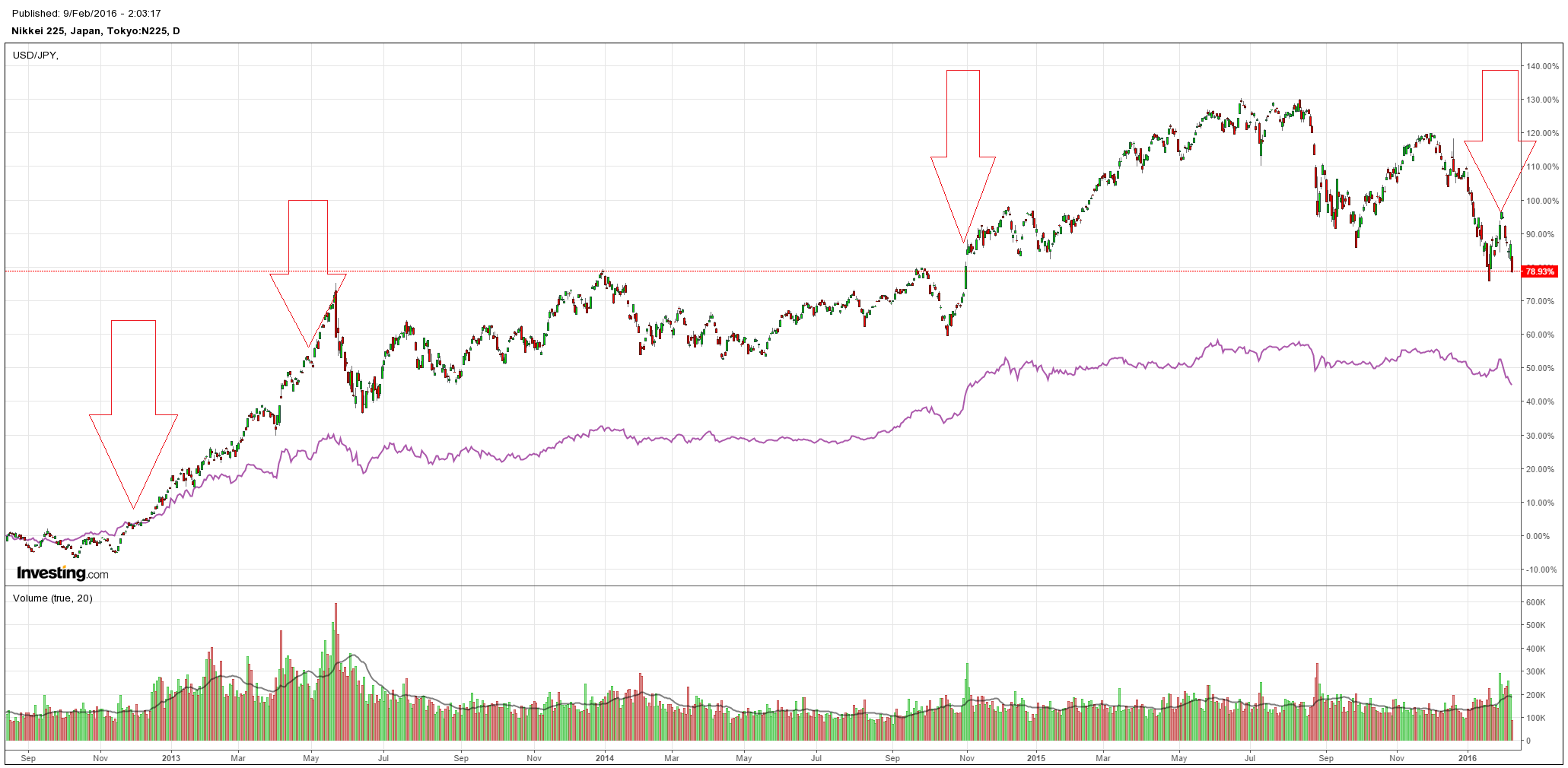Japanese stocks are taking another flogging today with the Nikkei down -4.4%. More to the point they are now down -8-9% since the BOJ announced its new negative interest rate policy (NIRP) as a part of its ongoing attempt to inflate markets.
Likewise the yen has rallied 6.1% since the announcement even though the 10 year bond rate just hit zero for the first time. On the following chart I’ve marked the three points:
- the election of Shinzo Abe;
- the first BOJ QE
- the second BOJ QE
- negative interest rates (NIRP).

Advertisement
The results are not very encouraging for the great central bank experiment of our time. QE works through three channels:
- markets are Monetarists and when you print money they pretty much assume that will debase the currency so its value falls true or not;
- in buying bonds from folks, they are offered higher prices and liquidity than might otherwise be the case and are free to invest that elsewhere;
- the falling yield on the risk-free rate of government bonds re-rates upwards the value of any other yield bearing asset by default and so shares and such go up;
- the first three cast a kind of spell over markets and correlation psychology drives everything higher.
If Japan’s NIRP experiment is anything to go by then all four of those transmission channels is failing, which does not bode well for what is ahead.
Advertisement

